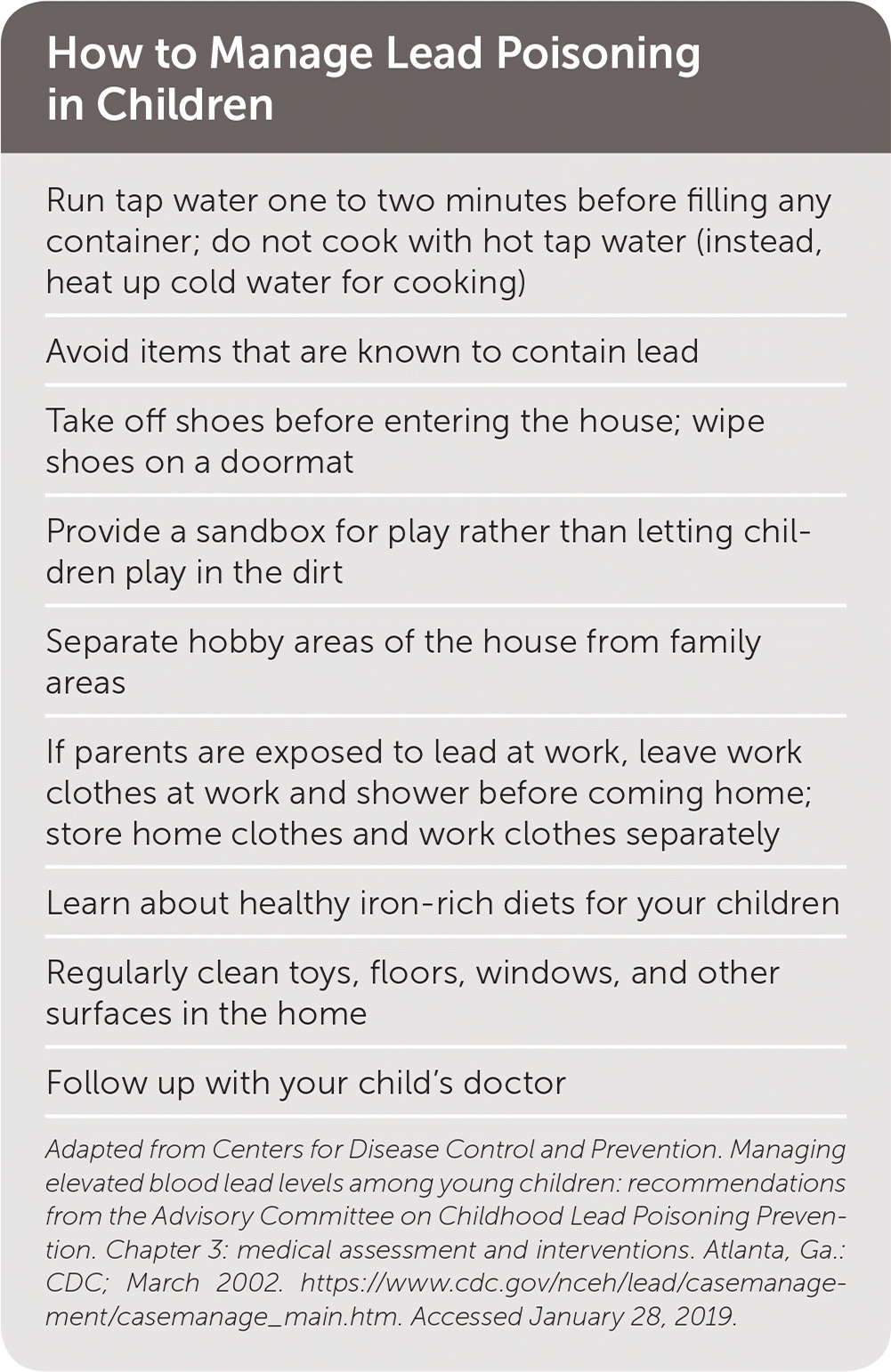
Am Fam Physician. 2019;100(1):online
See related article on lead poisoning in children
What is lead poisoning in children?
Any detectable lead in the blood is abnormal. Even low blood lead levels can cause delays in brain development and behavior problems. High levels of lead can cause further problems in the brain, intestines, kidneys, and bone marrow.
What causes it?
It is most commonly caused by exposure to lead in paints manufactured before 1978 or in soil contaminated by exterior house paint or industrial pollution. Lead can be present in toys, candies, or herbal remedies or medicines imported from foreign countries. Lead can also get into the water from lead pipes in older neighborhoods and homes.
Who should be tested?
Children with certain risk factors should be tested at 12 months and again at 24 months, or once between 36 and 72 months if they had not been tested before. Risk factors include living in or frequently visiting a house built before 1978, living near certain kinds of industrial plants, living in a community with lead water pipes, and using imported pottery, toys, candy, or medicines. Your doctor will tell you if your child should be tested.

| Run tap water one to two minutes before filling any container; do not cook with hot tap water (instead, heat up cold water for cooking) |
| Avoid items that are known to contain lead |
| Take off shoes before entering the house; wipe shoes on a doormat |
| Provide a sandbox for play rather than letting children play in the dirt |
| Separate hobby areas of the house from family areas |
| If parents are exposed to lead at work, leave work clothes at work and shower before coming home; store home clothes and work clothes separately |
| Learn about healthy iron-rich diets for your children |
| Regularly clean toys, floors, windows, and other surfaces in the home |
| Follow up with your child's doctor |
How is the test done?
Blood can be drawn from a vein or a fingerstick.
How is lead poisoning treated?
Low blood lead levels are treated by identifying the source or sources of lead and removing them from the child's environment. This can require the help of your local health department. Very high blood lead levels are rare, but when they occur special medicines called chelating (say: KEE-lay-ting) agents can help. They bind the lead in the blood and make it easier for the body to get rid of it. These medicines can be given by mouth or as a shot, depending on how high the lead levels are.
Where can I get more information?
Your doctor
AAFP's Patient Information Resource
Centers for Disease Control and Prevention
U.S. Consumer Product Safety Commission
http://www.cpsc.gov/ (product recalls)
